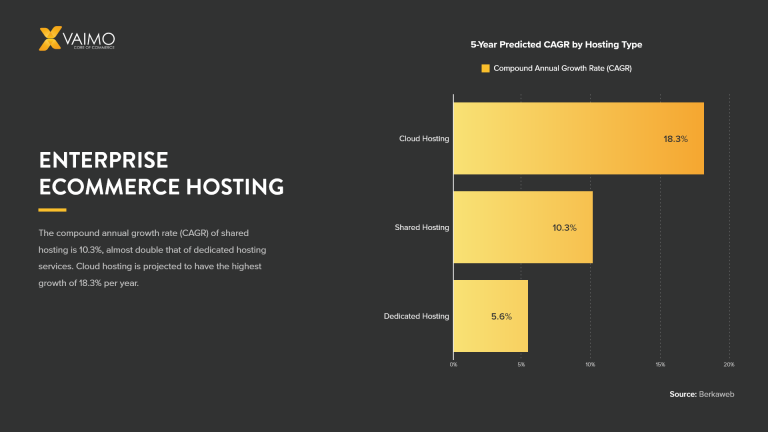It’s common practice today to hire an external vendor to take care of your IT operations. A vital element of that process is an SLA.
In our think piece, we will go through 10 things to look out for within your SLA. We will also touch on how to evaluate whether your provider offers the best value for your business.
What is an SLA?
An SLA, or a service level agreement, is an industry-standard and a mandatory part of sealing the relationship with a managed service provider for your ecommerce solution. While you’ve already done the brunt of the work by selecting just the right company for the job, it’s essential to comb through your SLA carefully to ensure your needs will be met.
What’s the purpose of an SLA?
An SLA defines both parties’ payment structure and service responsibilities and specifies the provider’s services, such as daily monitoring, software and hardware coverage, performance standards, response times, and more.
Gartner defines SLAs as “the expectations between the service provider and the customer and describes the products or services to be delivered, the single point of contact for end-user problems, and the metrics by which the effectiveness of the process is monitored and approved.”
All SLAs will vary, as no two providers are identical. Some SLAs will provide more detailed information, while others may touch lightly on some areas. For example, some SLAs will provide in-depth details on points such as liability protection for the provider. In contrast, others will dive into the specific emergencies that troubleshooting services will cover.
Overall, an SLA should be simple but very precise in its language. For example, a long wait time for your customers could result in abandoned shopping carts and, consequently, a loss of revenue for you. That’s why an SLA must clearly outline what is expected. Ultimately, an SLA should benefit your bottom line.
What should you look for in your SLA?
Your managed services provider will draw up the SLA for you. Generally, most providers use a similar SLA for all their clients, which they modify to fit the needs of your business.
Still, your SLA should follow a universal format. Read on to discover the ten things your SLA should contain.
1. What services are offered by the managed services provider?
Your SLA should define the scope of work your provider will routinely carry out (and what is excluded). This will usually be based on the specific level of service that you have chosen. For example, suppose you own a small business, and the provider offers several service levels. In that case, you may opt for the lowest level as you may not need the extensive services provided to large corporations.
The elements of this section should include, if applicable,
- the conditions for service availability,
- the responsibilities of each party,
- escalation protocols,
- and service standards such as the timeframe for every level of service.
2. What are the management elements in your SLA?
Management elements in an SLA should ideally contain
- the definitions of measurement standards and procedures,
- the reporting methods, contents, and frequency,
- a conflict resolution process, and
- a clause for updating the agreement as needed.
An edge case scenario to keep in mind is to ask whether an SLA is transferable in case the managed services provider merges or is acquired by another company.
3. What are standard metrics that are monitored in SLAs?
This aspect of the SLA should outline the metrics you will measure, including KPIs (key performance indicators). Depending on your business, you may opt to monitor different metrics. Here are a few standard metrics for ecommerce businesses to keep track of:
- Service availability: This defines when the service is available for usage. It’s common for large ecommerce businesses to require 99.999% uptime as every second counts for a company like Amazon or Walmart.
- Technical quality: This metric is measured by analysis tools and analyzes elements such as coding defects.
- Business value: More and more companies are opting to include business process metrics into their SLAs. The best practice sees companies re-using their existing KPIs and incorporating the provider’s figures.
- Security monitoring: Data breaches can be catastrophic in the current age of privacy laws and regulations. By measuring security efforts such as patching and regular updates, your SLA can help you provide proof that all reasonable preventative steps were taken in case of a security breach.
4. How to choose the metrics to measure your service?
The objective of your metrics should be to measure service performance and avoid extra costs adequately. Therefore, you should choose metrics that motivate the appropriate behavior from both parties involved. This means that both parties should strive to optimize their efforts to meet the performance goals defined by the metrics.
Analyze the proposed metrics and ensure they accurately represent factors within the vendor’s control. This means the vendor should not be penalized for your actions, which they cannot control. Creating an SLA that measures your performance on mutually dependent activities is a great way to drive the desired results.
Finally, choose metrics that are easily obtained. SLA metrics should ideally be collected automatically with minimal overhead, although this is not always possible. When deciding on metrics, opt for metrics that can be collected automatically.
5. How will the managed services provider handle issues?
The overall services carried out by your provider will be contingent on the daily, weekly, monthly, quarterly, and annual services. These routine services are everyday tasks, such as software updates, automated monitoring, and more.
Throughout the managing of your systems, issues will naturally occur. As such, your SLA must describe how your provider will troubleshoot problems and manage them.
For example, in the face of a problem, your SLA should outline the following:
- Response Time: When you report an issue or emergency, what is your provider’s maximum time to get in touch with you?
- Responsibility: What is the scope of your provider’s responsibility when it comes to managing information technology within your organization?
- Emergencies: What constitutes an emergency?
- Reporting Protocol: How will you report an emergency? Will this reporting protocol change based on the time of day, week, or holidays? What data must you provide in case of an emergency?
6. What’s your conflict resolution process?
This section should include actionable steps you and your vendor will take to resolve issues to achieve a positive outcome.
7. When is your managed services provider available?
Your SLA should delineate exactly when your provider is available based on the time of day, week, month, and year. Are you covered in late-night hours, on weekends, and holidays? The SLA should outline all availability times and fees in case of service provided after-hours.
8. What are the consequences for either party when failing to meet the agreed-upon metrics?
This part of the SLA outlines the repercussions of poor performance, including credits and fines. For example, a telecom company’s SLA may guarantee network availability of 99%. If the promise is not met, the payment to the vendor will be reduced by an agreed-upon percentage. This percentage may be determined on a sliding scale based on the significance of the breach.
9. How can you verify your service levels?
Generally, managed services providers will make statistics available online in real-time for you, usually via a secure online portal. You should be able to verify whether the SLAs are being met and whether you are entitled to any service credits as established in the SLA.
Your vendor will most likely have the tools and functions to provide measurements for you. However, it’s still a good idea to go through the verification they provide during the SLA agreement negotiation to eliminate any potential misunderstanding about the reporting methods.
10. How often can you revise your SLA?
Your business will grow and develop, and your needs will also change. An SLA should not be carved in stone; instead, it should clearly define the terms for modification for the duration of the contract. You should review your SLA when:
- Your business needs have changed, or significant developments have occurred within your ecommerce solution, such as re-platforming.
- Your workloads have changed.
- You require different metrics or have improved tools or processes to implement.
- Your technical capabilities have changed.
Key Takeaways
By carefully reviewing your SLA and ensuring that the structure aligns with your business-critical processes, you’ll rest assured that your SLA contains all necessary aspects. A solid SLA increases the likelihood of a successful working relationship between you and your provider and acts as an insurance policy.
A fool-proof SLA still requires a strong service provider to ensure that your digital commerce website performs optimally daily. Here at Vaimo, we’ve more than 14 years of experience supporting and maintaining over 400 ecommerce organizations. We’ve refined, perfected, and tailored SLA options for our clients that meet their unique business needs.
With Vaimo, you will receive a transparent and precise contract that ensures a shared understanding of the expectations. With experience crafting and negotiating more than 200 SLAs over the last 14 years, we have perfected this process and developed transparent best practices.
Please read about our service level management and talk to us today about your ecommerce needs.






